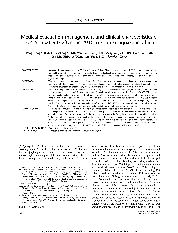摘要
BACKGROUND: A catastrophic earthquake struck the Yushu prefecture of China%26apos;s Qinghai province on April 14, 2010. Supported by the China National Ministry of Health, this study performed a detailed medical analysis of injuries and diseases, based on comprehensive medical data of hospitalized patients to share the experiences and lessons learned from emergency medical aid operations in high-altitude regions. %26lt;br%26gt;METHODS: To survey the management of medical relief, more than 10 interviews with rescuers were held and more than 100 documents were reviewed. Medical records of 3,255 patients from 57 hospitals were analyzed retrospectively. Patient demographic data, complaints, diagnoses, prognoses, injury types, dispositions, and means of transportation were all reviewed. %26lt;br%26gt;RESULTS: A total of 3,255 patients were admitted to hospitals. Of these, 1,426 (43.8%) were middle-aged (31-50 years), 2,574 (79.07%) were transported by plane, and the first 3 days were the peak period for air transportation. The records of 2,622 patients with earthquake-related injuries were analyzed, and 1,775 (68.32%) of them were admitted to hospital within the first 3 days. Bone fractures were diagnosed in 1,431 (55.08%) patients and crush syndrome was observed in 23 (0.89%). Illnesses accounted for 657 patients who were admitted to surveyed hospitals. Of these, 143 (20.63%) suffered from respiratory diseases and 259 (39.97%) from acute high-altitude sickness. Of the latter, 224 (86.49%) were rescuers. The overall mortality rate was 0.2% (7 of 3,255). Four patients died from earthquake-related injuries and three from other illnesses. %26lt;br%26gt;CONCLUSIONS: A devastating earthquake occurring in a remote, high-altitude region presented a variety of challenges for external medical aid. Air transportation for those with severe injuries and diseases played a crucial role in decreasing the mortality and morbidity. It is necessary for hospitals to initiate effective emergency measures while facing the peak admission flow within the initial 72-hour period. Characteristic factors such as high altitude, low-oxygen content, local construction features, and lifestyle may contribute to complex injuries and illnesses. More attention should be paid to medical aid training for rescuers, and effecive measures should be developed to deal with destructive natural disasters occurring in special geographical environments. (J Trauma Acute Care Surg. 2012;72: 1626-1633.
- 出版日期2012-6
- 单位中国人民解放军第二军医大学
